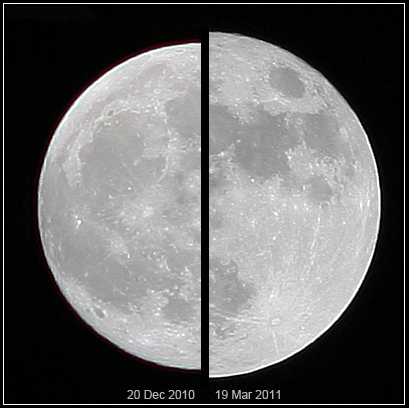What Is the Difference Between Super Moon and Blue Moon
During our history, humans have often misattributed lunar events for why both the good and bad things happen around us. This includes the full Moon inducing madness, young maidens having an increased fertility during a blue Moon, a red Moon being a sign of impending doom, or the supermoon leading to natural disasters.
Today, we know that the Moon does influence some things here on Earth (tides for instance), but many of the other connections, such as the myths above or planting crops based on a lunar cycle, do not stand up to scientific inquiry. These supposed effects have been either entirely disproved or are completely unsupported by evidence.
Nevertheless, we are generally in awe of the white disc in the night's sky.
The Moon is full, but how?
A full Moon happens when the Sun, Earth and Moon line up in that order. This celestial arrangement is known as a 'syzygy' and results in sunlight reflecting from a full hemisphere of the Moon back to Earth, appearing as a full disc of light in the night's sky.
Conversely, a new Moon occurs when the order is Sun, Moon and then Earth, resulting in the reflected light missing us completely. Anything in between these two extremes results in the waxing or waning Moon, with only a partial disc visible in the sky. As an aside, this also explains why you will only ever see a partial Moon rise during the day (as the Moon would need to be on the same side as the Sun).

What's so super about a supermoon?
A supermoon is brighter and an apparently larger full Moon due to it being near its closest point to the Earth in its orbit (the perigee). How much bigger and brighter is it? At most, it appears about 14 per cent bigger and up to 30 per cent brighter. The change is so slight that you're unlikely to even notice unless you were told. It does, however, often receive a bit of extra media coverage (such as this article), so people perceive a difference.

Of note, the name supermoon was coined by anastrologer, not an astronomer. Although the term is quite catchy, many scientists feel the phrase causes overhype—not that the full Moon isn't special, but there are so many other fascinating astronomical events that deserve attention. For reference, there was already an astronomy term for a supermoon, albeit a little harder to pronounce: 'perigee-syzygy', which describes the position of the orbit (perigee) and the alignment of the Sun–Earth–Moon (syzygy).
Blue Moon, you saw me standing alone…
A blue Moon is a completely human-made construct, due to our Gregorian calendar not matching the lunar cycle.
The average complete lunar month takes 29.5 days. As our calendar months are defined to have between 28 and 31 days, it follows that almost every month there is a repeat of up to five per cent of the lunar cycle. A blue Moon happens when this repeated section includes a full Moon (i.e. two full Moons during the same calendar month).
It also follows that there would be a 'blue' new Moon, but it never gets the same amount of attention (due to being very hard to see!)
The blood red Moon?
The red Moon occurs during a total lunar eclipse, where the Moon passes through the shadow of the Earth blocking the Sun's light.
The shadow is not entirely dark though, with light from the Sun bending through our atmosphere akin to how light bends through a lens. This way, a little of the light from the sunset and sunrise around the Earth fills the Earth's shadow, subtly illuminating the Moon. But why is it red?

Dust and gas in the atmosphere is reasonably efficient at scattering blue light but not as good at scattering red light. This scattering is what makes the sky appear blue. At sunrise and sunset, the light from the Sun travels the farthest through the atmosphere, resulting in scattering almost all the blue-ish light, leaving only the oranges and reds. This is what makes sunrises/sunsets appear orange–red.
In the case of our lunar eclipse, by the time the Sun's light beam has passed in, through and out of the Earth's atmosphere, all this scattering effectively removes the blue part of the spectrum, resulting in predominately red light illuminating the Moon.
So when can you see a super, blood or blue moon?
Astronomer Fred Espenak maintains a guide to upcoming lunar events, or you can search for the event in any online search engine.
Source: https://www.science.org.au/curious/space-time/what-super-moon-blood-moon-or-blue-moon
0 Response to "What Is the Difference Between Super Moon and Blue Moon"
Post a Comment